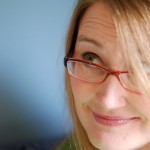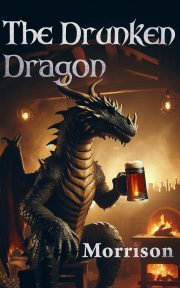The Pirate Code of Children’s Literature
by Stacy Whitman
Editorial Director, Tu Books, an imprint of Lee & Low Books
 There seems to be a lot of confusion in the SFF community among those unfamiliar with children’s literature about just what is children’s literature and what is young adult. Outside of genre circles, when I introduce myself as a children’s book editor, most people assume I edit picture books—and they often also think that means I’m a copyeditor, but that’s another story for another day. Inside of genre circles, “YA” seems to be taking hold as a catch-all term for anything written for anyone under 18, at least for people with whom I get into discussions at cons. Being at cons, sometimes these “discussions” get rather heated! When “YA” SF award nominees come out, the books on the short lists might be either middle grade or young adult—for example, Garth Nix’s Keys to the Kingdom series, solidly middle grade, was nominated for the 2007 Locus Award. Very seldom do these awards have a “children’s” category, so “YA” becomes the default.
There seems to be a lot of confusion in the SFF community among those unfamiliar with children’s literature about just what is children’s literature and what is young adult. Outside of genre circles, when I introduce myself as a children’s book editor, most people assume I edit picture books—and they often also think that means I’m a copyeditor, but that’s another story for another day. Inside of genre circles, “YA” seems to be taking hold as a catch-all term for anything written for anyone under 18, at least for people with whom I get into discussions at cons. Being at cons, sometimes these “discussions” get rather heated! When “YA” SF award nominees come out, the books on the short lists might be either middle grade or young adult—for example, Garth Nix’s Keys to the Kingdom series, solidly middle grade, was nominated for the 2007 Locus Award. Very seldom do these awards have a “children’s” category, so “YA” becomes the default.
As some prominent children’s and YA authors announce that they’re joining SFWA, I believe the understanding of children’s literature in the community grows. But we in this community are nothing if not rabid about semantics, and the argument becomes circular: since so many people use YA as a catch-all, it’s becoming a catch-all, so how children’s book industry people define the category doesn’t matter. Does it?
I would say yes. Sure, I’m biased. But there is a reason that publishers separate children’s literature into categories not only by genre but also by age: developmental appropriateness. And publishers must take into account the age ranges of two audiences: anticipated readers and actual readers. Complicating matters is the age of the characters themselves.
Anticipated audience
The exact ages of any particular children’s book publisher’s anticipated audience might vary slightly from the following list, but here’s a general breakdown of children’s book age categories as they’re used by publishers, booksellers, and librarians who work with children and teens. They’re more like guidelines.
- Board book: Babies and toddlers
- Picture book: 0 to 5
- Older picture book: 4-11 and up. Some picture books are appropriate for use in all elementary grades, and, depending on content, often reach even older
- Early readers (includes “I Can Read” books and other books for emerging readers): 4 to 8
- Chapter book (these are a newly independent reader’s first “real” books): 6 to 9
- Middle grade (MG; solid children’s novels, like Ramona Quimby, Age 8, and Harry Potter and the Sorcerer’s Stone): 8 to 12
- Young adult (YA): 12 to 18, or, some would argue, simply 12 and up, given that so many adults are reaching over to YA for enjoyable reading.
There’s a huge difference between the developmental levels of kids at 8 and 12, and a bigger difference between a 12-year-old’s developmental level and an 18-year-old’s. Publishers place books into age groups both for marketing purposes and to ensure that librarians, teachers, parents, and booksellers (the gatekeepers) can judge whether a book will meet their needs. Some libraries’ teen rooms don’t even let kids younger than 12 or 13 into the room, not to mention adults, to ensure a set-apart safe space for teens.
The lines are, of course, blurry. There isn’t necessarily a huge developmental difference between an 11-year-old and a 12-year-old, and you’ll likely see tweens 11-13 flitting between the children’s room and the teen room. And given the huge gap between 12 and 18, some books in the YA section might be much more appropriate for an 18-year-old than for a 12-year-old. In fact, some bookstores have started breaking those books into two sections, one for older and one for younger teens.
Actual readership
Depending on the maturity level of an individual child/teen—which can vary greatly—different kids of the same age might be reading in different sections of the library, and some kids just prefer to read everything from chapter books to YA. It’s a common sight in many junior highs for a school librarian to see their most advanced readers finding comfort in re-reading the Magic Treehouse chapter books, perhaps as a palate cleanser between Shakespeare and Scott Westerfeld’s Uglies.
What kids are actually reading depends on their personality and individual development, but it can be generalized that kids “read up.” This is because of a human development phenomenon called “anticipatory socialization.” Junior high students like to read about high schoolers, because they want to know what it will be like for them in a few years.
But a publisher has to pick a category to focus marketing efforts in, and a section of the bookstore/library to tell booksellers/librarians to shelve it. This means that a writer needs to also figure out where he or she sees a book being shelved and who would be reading the book. And don’t say “everyone from 8 to 80.” You can hope that, but it really is much more helpful to narrow it down a little!
How “reading up” affects character age within categories
Anticipatory socialization is the whole reason that the first Harry Potter book’s anticipated readership was 8-12: Harry was 11, and for the well-read 8-year-old, reading about an 11-year-old is not much of a stretch, especially the possibility that it could happen to you in a few years. A lot of editors will suggest that you make your protagonist a year or two older than your anticipated reader. Kids older or younger might read and love the book, but the targeted reader is probably in a narrow age band. Seen from another perspective, if your character is solidly 15, then subtract 2 or 3 years for the youngest target (anticipated) audience. By taking into account how kids read up, hopefully the gap between an anticipated reader and the actual reader who picks the book up in the library or bookstore won’t be that wide.
Content is a factor to consider as well. If a YA book openly or graphically handles “mature” topics (sex, violence, abuse, murder, adult language etc.) it would probably skew toward the older end of a YA audience; a YA that handled similar subjects in a more “off-stage” way might skew younger. This isn’t to say that tough subjects can’t be tackled in children’s books even for the middle grade crowd. It all depends on how the subjects are tackled. The MPAA ratings system can be a great guideline for authors to consider mature content as they write. I would liken middle grade to PG for 8 year olds up to PG-13 for 12 year olds, and YA might range from PG-13 to R. It isn’t an exact comparison, but in general it’s a good rule of thumb.
For lists of specific books that fit in the middle grade and YA categories (at least, in this editor’s opinion), I have several lists of recommended books in several categories on my blog. Opinions vary from editor to editor, house to house, agent to agent. Like the Pirate Code, these are guidelines. May the information guide you to a better understanding of the children’s book market.
—
Stacy Whitman is the editorial director of Tu Books, an imprint of Lee & Low Books. She was previously an editor for Mirrorstone, the children’s and young adult imprint of Wizards of the Coast in Seattle. She holds a master’s degree in children’s literature from Simmons College. Currently, she is seeking middle grade and young adult science fiction and fantasy novels that feature diverse characters and settings. See Tu’s submission guidelines for more information. You can also follow Tu Books on Twitter or become a fan on Facebook.


